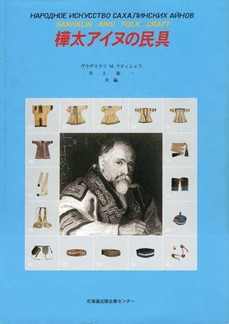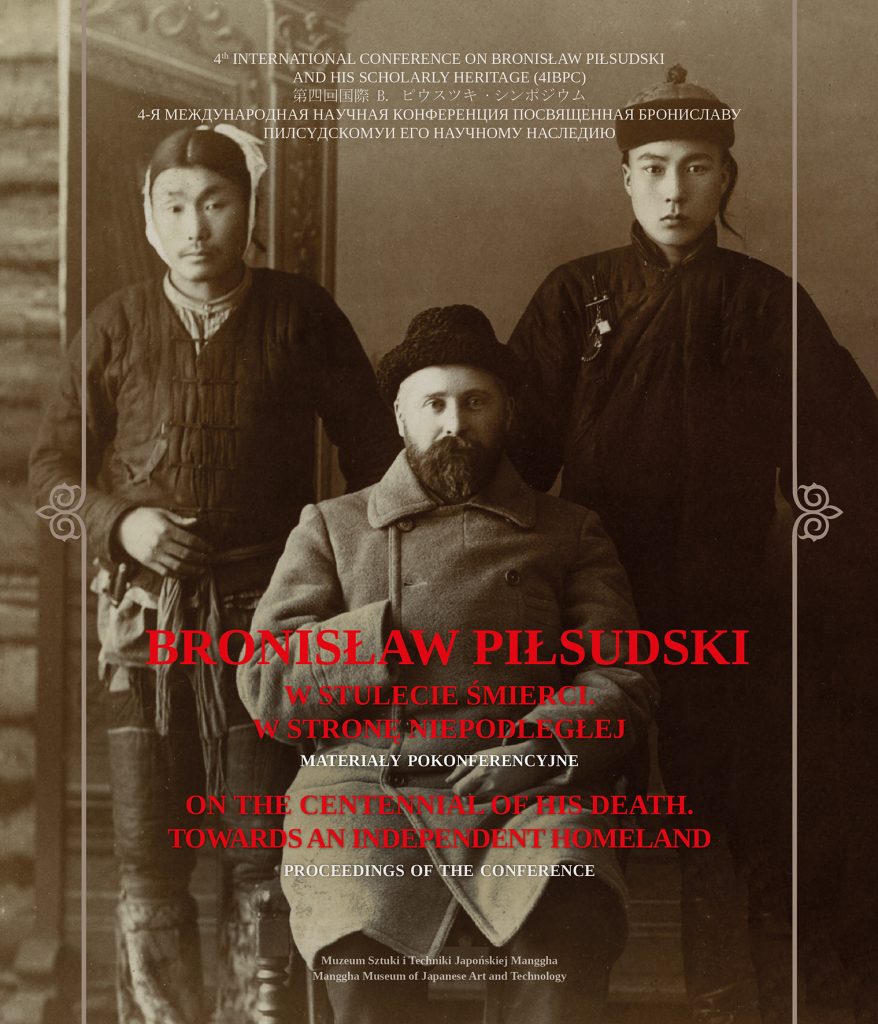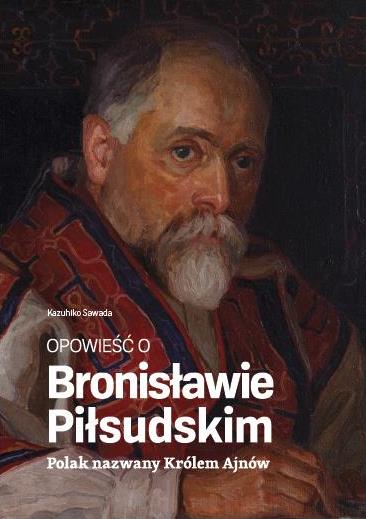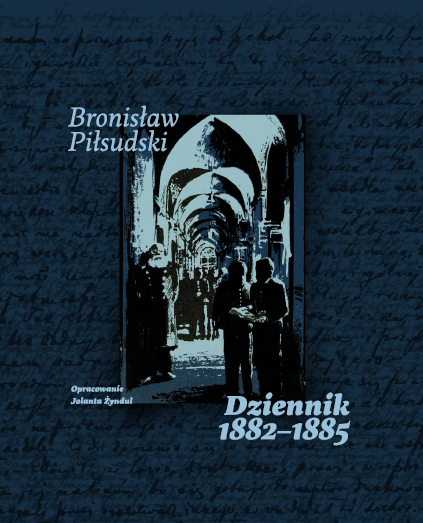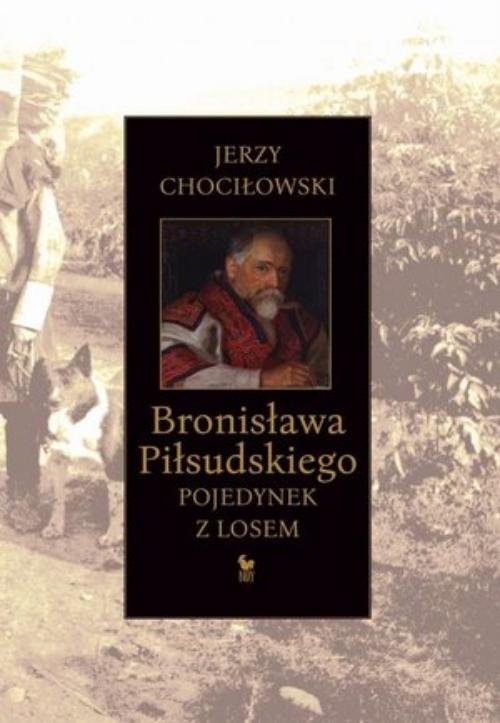
Heritage
Publishing is a Culture
Heritage
Koichi Inoue
One of the late-spring days in 1975, Nobuyoshi Nozawa came to my office at the Faculty of Letters of Hokkaido University, accompanied by his son, Tsunetoki. It happened shortly after I had moved from Tokyo to Sapporo, having been appointed an assistant at the Institute of Northern Cultures attached to the Faculty. On that occasion, I was slightly perplexed by this unexpected visit of the president of a local publishing house, which had issued two series of the collected works of Tsunekichi and Hiromichi Kohno—the father and son of a prominent intellectual Hokkaido family. The president clearly stated that his motto was to publish fundamental materials on the history and culture of Hokkaido and its northern outskirts. He then bowed down, saying: “Please take good care of my son who has recently joined my company!”. Forty-six years have elapsed since then, and the Hokkaido Publication Planning Centre (henceforth – HPPC) has recently celebrated its 50th anniversary. I am very sad to say that Tsunetoki Nozawa, whom the president introduced to me on that memorable occasion in 1975, passed away in 2002.
Having left Hokkaido in 1983, I returned to Sapporo in 1994. It was in 2000 that my working contact with the HPPC was resumed. At that time, I had a responsible task of editing and printing in Japan a book entitled “Sakhalin Ainu Folk Craft”, the task that I had been entrusted with by Vladislav M. Latyshev, director of the Sakhalin Regional Museum in Yuzhno-Sakhalinsk, Russia. The book was an illustrated catalogue of the special exhibition, held in the Museum in 1991 along with the 2nd International Bronisław Piłsudski Conference, commemorating the 125th anniversary of his birth. V. M. Latyshev had originally planned to get the catalogue published in Russia but due to the overall turmoil following the collapse of the USSR, he entrusted me with the Russian text of introductory notes and specimen descriptions as well as the 102 images of the exhibited specimens. Responding to his request, I built up for myself the following basic plan: (1) The book shall be printed in a trilingual form – i.e. simultaneously in three languages: Japanese, Russian, and English; (2) In order to implement this task I shall seek a grant-in-aid for publication from the Japan Society for Promotion of Science (henceforth – JSPS). Whilst the former was smoothly progressing, I came across an unexpected deadlock in the latter when trying to find a publisher. Every publishing house I contacted, responded in a similar manner: “We can’t meet your wishes, unfortunately”.
The late Motomichi Kohno, a close friend of mine, who could no longer remain indifferent to my miserable state, promptly told about it Isao Nozawa of the HPPC. To my surprise, being fully aware that my project could cause an imminent and substantial deficit for the company, Isao made a swift decision to accept “Sakhalin Ainu Folk Craft” for publication. The only way to reduce the expected deficit was to limit the overall print number, thus the price per copy was set inevitably high. Sakhalin Ainu Folk Craft was eventually published in February 2002 (photos 1, 2) (1). Since it is clearly stated in the imprint that the “publisher” was Nobuyoshi Nozawa, presumably, there might have been his father’s involvement behind Isao’s decision to go ahead with this costly project.
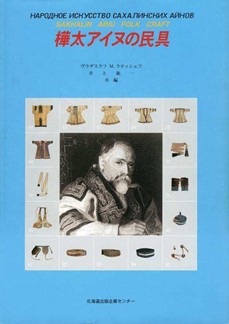

Peter the Great Museum of Anthropology and Ethnography in St. Petersburg preserves about 1,000 Ainu artefacts, collected by Bronisław Piłsudski on the islands of Sakhalin and Hokkaido. Out of this number, approximately 700 items are nothing short of being the world’s most substantial and most valuable representation of Enchu (i.e. Sakhalin Ainu) material culture. Sakhalin Ainu Folk Craft is the first ever published catalogue illustrating ten percent of specimens out of the whole collection. Although special exhibitions of the Piłsudski collection later took place in Japan (2013-14) (2) and in Russia (2019-20) (3), and a new catalogue was published each time, nevertheless the significance of our trilingual variant has not been diminished.

In the years leading to 150th anniversary of Bronisław Piłsudski’s birth in 2016, I made up my mind to compile a volume of Bronisław Piłsudski’s writings on the ethnography of Sakhalin Island. He himself had envisaged writing a monograph on the Sakhalin ethnography but this vision was shattered by the events of World War I; therefore, I have sought to realise his unaccomplished desire. Since The Collected Works of Bronisław Piłsudski (5 volumes rendered in English) (4) have already been issued up to the 4th volume, I decided to target Japanese-language readers. I envisaged the planned compilation as bearing two features: (1) Piłsudski’s works relating to his Sakhalin expedition, which appeared in various languages during his lifetime or posthumously, are to be translated from the original text of publication into Japanese; (2) A brief bibliographical introduction is to be attached to each text. Having completed the translations and editorial work, I was about to apply for the grant-in-aid for publication once again. Alas, I could not do so since I was invariably receiving “polite declines” from those publishers whom I had contacted for cooperation.
Nobuyoshi Nozawa passed away in 2006, and I was deeply determined not to impose any more burden on the HPPC. Consequently, having looked for every possible way out with bare hands, I eventually found myself left astray in a blind alley. And again, Motomichi Kohno turned out to be my white knight – he informed the HPPC’s new president, Isao Nozawa, about my predicament and appealed for his support. As a result, Isao told me in a calm but definite tone that he was ready to publish my second work, too, which I decided to call B. Piłsudski’s Sakhalin Ethnography. Thanks to Isao’s swift decision, I was able to apply for another grant-in-aid for publication in December 2015. On this occasion, I learned that the JSPS had requested the publisher-to-be to submit three copies of the temporarily bound book-sample as the material for screening.
Unfortunately, several months later I was informed that the JSPS had not approved my application as a result of the so-called “fair screening”. On the bookshelf in my study, a temporarily bound book-sample with indigo covering, exactly the cordial gift from Isao Nozawa, is enshrined as a witness of this failed endeavour (photo 3).
B. Piłsudski’s Sakhalin Ethnography was eventually published in January 2018 as № 63 of the serial publication from the Centre for North- East Asian Studies, Tohoku University (photo 4) (5). Although the book did not appear in time for Piłsudski’s 150th birth anniversary, yet I was able to dedicate it to the 100th anniversary of his death, remembering that Bronisław Piłsudski passed away in 1918.
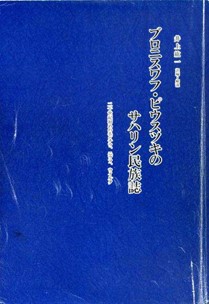
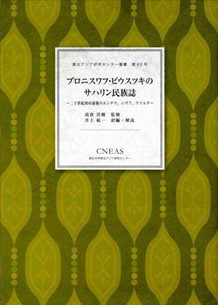
In an important talk of 1978, published in the local newspaper “Hokkaido Shimbun”, Nobuyoshi Nozawa stated at the beginning: “Publishing is a culture”, and then proceeded to say: “Sort out those cultural materials and research results of the region that must be left behind and let them be published!—it is essential to find therein one’s own joy and make it a primary goal as well”(6). The spirit of this pronouncement seems to have been fully inherited by his sons.
It would be a great personal honour if my work might be seen as deserving of such an accolade. Nonetheless, publishing is obviously an arithmetic as well as a culture. In other words, it is a balancing act between what is spiritually desired and what is fiscally prudent. The Hokkaido Publication Planning Centre [[email protected]] still holds a number of copies of Sakhalin Ainu Folk Craft looking for an interested owner. In order to reduce the HPPC’s stock of this rare catalogue, I might have talked too much about my own personal matters. I humbly beg your indulgence—
Notes:
(1) Vladislav M. Latyshev & Koichi Inoue (eds.), Sakhalin Ainu Folk Craft, Sapporo: Hokkaido Publication Planning Centre / В. М. Латышев и К. Иноуэ (ред.), Народное искусство сахалинских айнов, Саппоро: Хоккайдский Центр Издательского Планирования / ヴラヂス ラフ・M・ラティシェフ、井上紘一 共編『樺太アイヌの民具』札幌:北海道出版企画 センター (2002)
(2) Культура айнов: взгляд из России. Из коллекции Музея антропологии и этнографии имени Петра Великого (Кунсткамера) Российской Академии наук, Саппоро: Организация по продвижению и изучению айнской культуры /『ロシアが見たアイヌ文化:ロシア科学 アカデミー・ピョートル大帝記念人類学民族学博物館のコレクションより』札幌:公 益法人アイヌ文化振興・研究推進機構編集・発行 (2013)
(3) Мир айнов глазами Бронислава Пилсудского. Коллекции Кунсткамеры / Świat ajn ów oczami Bronisława Piłsudskiego. Kolekcje Kunstkamery / The World of the Ainu through the Eyes of Bronisław Piłsudski. Kunstkamera Collections /, Санкт-Петербург: Музей Антропологии и Этнографии им. Петра Великого (Кунсткамера) Российской Академии Наук (2019)
(4) Alfred F. Majewicz (ed.), The Collected Works of Bronisław Piłsudski –– Vol. 1: The Aborigines of Sakhalin, Berlin & New York: Mouton de Gruyter (1998); Vol. 2; Materials for the Study of the Ainu Language and Folklore (Cracow 1912), Berlin & New York: Mouton de Gruyter (1998); Vol. 3: op. cit. 2, Berlin & New York: Mouton de Gruyter (2004); Vol. 4: Materials for the Study of Tungusic Languages and Folklore, Berlin & Boston: Walter de Gruyter (2011); Vol. 5: Materials for the Study of the Nivhgu (Gilyak) Language and Folklore (forthcoming)
(5) Koichi Inoue (ed.), Bronisław Piłsudski’s Sakhalin Ethnography––The Enchu, Nivkh and Uilta around the beginning of the 20th Century /高倉浩樹監修、井上紘一訳編・解説『ブロニス ワフ・ピウスツキのサハリン民族誌––二十世紀初め前後のエンチウ、ニヴフ、ウイル タ』(東北アジア研究センター叢書 第 63 号)仙台 (2018)
(6) “Leave cultural achievements of the region for later generations! Profit first is no good”, Hokkaido Shimbun, 13 January 1978 /「地域の文化的研究を後世に––利益主義ではだめ」 『北海道新聞』 (1978 年 1 月 13 日付)

